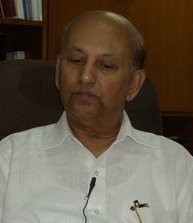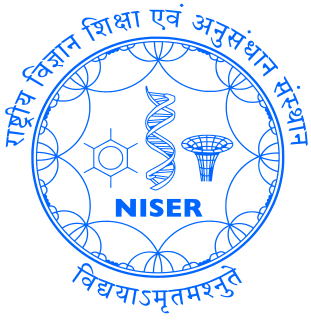
Shivaji University established in 1962, is a state university located at Kolhapur, Maharashtra, India. The university, with a campus spread over 853 acres (345 ha), is named after Chhatrapati Shivaji, founder of the Maratha Empire. It was inaugurated on 18 November 1962 by Sarvepalli Radhakrishnan, the then president of India. Yashwantrao Chavan and Balasaheb Desai took the lead in establishing this university. Educational institutions from Kolhapur, Sangli, and Satara districts come under its jurisdiction with 279 affiliated colleges and recognised institutes. One of the major objectives behind its foundation was to cater to the educational needs of South Maharashtra region. The University's efforts towards excellence are being recognised by the substantial grants received from funding agencies such as University Grants Commission (India), Department of Science and Technology (India), and DBT. The university is self reliant in water, which is stored on campus during the rainy season. It has a biodiversity-rich campus.

Ashesh Prosad Mitra FNA, FASc, FRS was a physicist who headed the National Physics Laboratory in Delhi, India and was the Director General of the Council of Scientific and Industrial Research (CSIR). He is primarily known for his work on environmental physics.

Udupi Ramachandra Rao was an Indian space scientist and chairman of the Indian Space Research Organisation. He was also the Chairman of the Governing Council of the Physical Research Laboratory at Ahmedabad and Nehru Planetarium at Bengaluru and chancellor of the Indian Institute for Space Science and Technology (IIST) at Thiruvananthapuram.

Thanu Padmanabhan is an Indian theoretical physicist and cosmologist whose research spans a wide variety of topics in Gravitation, Structure formation in the universe and Quantum Gravity. He has published nearly 300 papers and reviews in international journals and ten books in these areas. He has made several contributions related to the analysis and modelling of dark energy in the universe and the interpretation of gravity as an emergent phenomenon. He is currently a Distinguished Professor at the Inter-University Centre for Astronomy and Astrophysics, (IUCAA) at Pune, India.

The National Institute of Science Education and Research (NISER) is an autonomous premier public research institute in Jatani (Khordha), Odisha, India under the umbrella of Department of Atomic Energy, Govt. of India. The institute is a constituent institution of Homi Bhabha National Institute (HBNI). The prime minister, Manmohan Singh (2004–2014), laid the foundation stone on August 28, 2006, establishing the institute along the lines of the IISc in Bangalore, and its seven sister institutions, the IISERs, established at Pune, Mohali, Kolkata, Bhopal, Berhampur, Tirupati and Thiruvananthapuram in India.

G. Madhavan Nair is an Indian space scientist and a former Chairman of the Indian Space Research Organisation, and Secretary to the Department of Space, Government of India. He has also been the Chairman of the Space Commission and Chairman of the Governing Body of the Antrix Corporation, Bangalore. He was Chairman of the Board of Governors of the Indian Institute of Technology Patna until he stepped down due to his involvement in a controversial deal relating to sale of radio spectrum bandwidth involving Antrix. He was subsequently barred from holding any government positions.
Satya Prakash is an Indian plasma physicist and a former senior professor at the Physical Research Laboratory. He is known for his studies on Langmuir probes and other contributions in space and plasma sciences. A protégé of Vikram Sarabhai, Satya Prakash is an elected fellow of all the three major Indian science academies such as Indian Academy of Sciences, Indian National Science Academy and National Academy of Sciences, India as well as the Gujarat Science Academy and is a recipient of the Hari Om Ashram Prerit Senior Scientist Award. The Government of India honored him with Padma Shri, the fourth highest Indian civilian award for his contributions to the discipline of Physics, in 1982.

Diwan BahadurKalpathi Ramakrishna Ramanathan FNA, FASc, FIAS, Hon.FRMetS was an Indian physicist and meteorologist. He was the first Director of Physical Research Laboratory, Ahmedabad. From 1954 to 1957, Ramanathan was President of the International Union of Geodesy and Geophysics (IUGG). Ramanathan was awarded Padma Bhushan in 1965 and Padma Vibhushan in 1976.

Prem Chand Pandey is an Indian scientist and academic in the fields of satellite oceanography, remote sensing, atmospheric science, the Antarctic and climate change, and an emeritus professor at IIT Gandhinagar.

Dinakar Mashnu Salunke is an immunologist and structural biologist Presently, he is the Director of International Centre for Genetic Engineering and Biotechnology (ICGEB) New Delhi. Earlier he was the Executive Director of newly established Regional Centre for Biotechnology (RCB), an institution jointly set up by Department of Biotechnology (India) and UNESCO at Faridabad. He is the recipient of Shanti Swarup Bhatnagar Prize for Science and Technology in the category of biological sciences and Fellow of all major science academies in India.
Francisca MAX Okeke is a Nigerian physicist. She is a Professor of Physics at the University of Nigeria, Nsukka and first female head of a department in the University. She was the Head of Department of Physics and Astronomy, UNN, 2003 - 2006. She was the First female Dean, Faculty of Physical Sciences, UNN, 2008-2010.
Vinod Krishan, is an Indian physicist, a Senior Professor and Dean of Sciences at the Indian Institute of Astrophysics, Bangalore. She is involved in teaching and research in Plasma Physics. She is a Fellow of the National Academy of Sciences, India and the 1991 recipient of the Vikram Sarabhai Award for Space Sciences.
Shashikumar Madhusudan Chitre FNA, FASc, FNASc, FRAS was an Indian mathematician and astrophysicist, known for his research in Astronomy and Astrophysics. The Government of India honored him, in 2012, with Padma Bhushan, the third highest civilian award, for his services to the sciences.
Dr. Ushadevi Narendra Bhosle is an Indian mathematician, educator and researcher. She specialises in Algebraic Geometry. She worked on the moduli spaces of bundles.

The Indian Institute of Geomagnetism is an autonomous research institution established by the Government of India's Department of Science and Technology. The facility is engaged in basic and applied research in geomagnetism, as well as allied areas of geophysics, atmospheric physics and space physics, as well as plasma physics. The Institute currently operates 12 magnetic observatories and actively participates in the Indian Antarctic Program.

Kasturi Lal Chopra was an Indian material physicist and a former director of the Indian Institute of Technology, Kharagpur. He is the founder of the Thin Film Laboratory at Indian Institute of Technology, Delhi and the Microscience Laboratory at IIT, Kharagpur and holds several US and Indian patents for his research findings. Author of a number of books on thin film technology, Chopra is a recipient of Shanti Swarup Bhatnagar Prize, the highest Indian award in the science and technology categories. The Government of India awarded him the fourth highest civilian honour of the Padma Shri, in 2008, for his contributions to science and engineering.
Sasanka Chandra Bhattacharyya (1918–2013) was an Indian natural product chemist and the director of Bose Institute, Kolkata. He was known for his studies on structures and configurations of terpenoids and synthesis of Vetiver Oil and natural musk. He was the vice-president of the Indian National Science Academy and was an elected fellow of the academy as well as the Indian Academy of Sciences. The Council of Scientific and Industrial Research, the apex agency of the Government of India for scientific research, awarded him the Shanti Swarup Bhatnagar Prize for Science and Technology, one of the highest Indian science awards, in 1962, for his contributions to chemical sciences.
Barry Ramachandra Rao was an Indian space physicist and the vice chairman of the University Grants Commission of India. Known for his pioneering research in radio physics, Rao was a Member of Parliament of the Rajya Sabha and an elected fellow of all the three major Indian science academies viz. Indian Academy of Sciences, Indian National Science Academy and National Academy of Sciences, India. The Council of Scientific and Industrial Research, the apex agency of the Government of India for scientific research, awarded him the Shanti Swarup Bhatnagar Prize for Science and Technology, one of the highest Indian science awards for his contributions to Physical Sciences in 1965.
Rumi Nakamura is an Earth scientist at the Austrian Academy of Sciences. She works on solar-terrestrial interactions, with a particular focus on the terrestrial magnetosphere. Nakamura won the 2014 European Geosciences Union Julius Bartels Medal.
Cathryn N. Mitchell is a Professor of Electronic & Electronic Engineering at the University of Bath. She was awarded the 2019 Institute of Physics Edward Appleton Medal and Prize.










